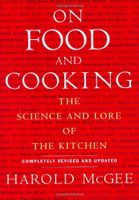Advertisement
Heat Thickens—and Curdles
By Harold McGee
Published 2004
The consistency of the hot egg sauces depends on two factors. One is the form and amount in which the butter is incorporated. Whole butter is about 15% water, so each addition thins the egg phase and the sauce as a whole; clarified butter is all butterfat, and thickens the sauce with every addition. The second influence on consistency is the degree to which the egg yolks are heated and thickened. The main trick in making these sauces is to heat the egg yolks enough to obtain the desired thickness, but not so much that the yolk proteins coagulate into little solid curds and the sauce separates. This happens at around 160–170°F/ 70–77°C. A double boiler or a saucepan resting above a larger pan of simmering water will guarantee a gentle and even heat but will also slow the cooking; for this reason, some cooks prefer the riskier but rapid direct heat of a burner. Heating the yolks with the acidic reduction also minimizes curdling; if the pH is around 4.5, the equivalent of yogurt’s acidity, the yolks can be safely heated to 195°F/90°C. (The acid causes the proteins to repel each other, so that they unfold before bonding to each other and form an extended network rather than dense curds.) Cooks concerned about salmonella should make sure the yolks are cooked at least to 160°F/70°C, or else should use pasteurized eggs.


